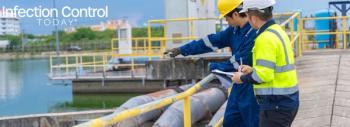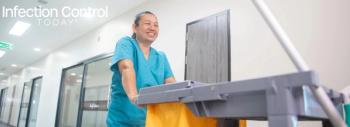
- Infection Control Today, March 2022, (Vol. 26, No. 2)
- Volume 26
- Issue 2
COVID-19 Reinfections in Early Stage of Pandemic Examined
CDC investigators looked at what might cause reinfections during the first wave of the pandemic.
Before the arrival of various variants of COVID-19, such as the Delta variant, reinfection of health care professionals and first responders over a 9-month period was fairly uncommon, according to a
“Seropositivity decreased reinfection risk,” the study states. “Lower reinfection risk associated with exposure to a household member with COVID-19 before the serosurvey may reflect subsequently reduced household transmission among members of previously infected households.”
Included in the study were individuals who tested positive for SARS-CoV-2 14 or more days after their first serology test. The CDC investigators defined reinfection as a second positive test 90 or more days after the first positive test.
“The association between serostatus and reinfection was assessed with a proportional hazards model adjusting for demographics, exposures, and virus testing frequency,” the study states.
Of 1572 participants who’d been infected with SARS-CoV-2, 40 (2.5%) were reinfected. Reinfections for seropositive participants was 1.9%; while 8.4% of seronegative participants were reinfected. Most of the reinfections occurred among nursing home residents and corrections personnel in Rhode Island (n=30). They were also tested the most, with a mean testing rate of 30.3 tests as opposed to 4.6 for other Rhode Island and New York City participants.
The greater number of tests in Rhode Island sprung from the CDC mandating routine periodic testing for nursing home residents and staff. The Rhode Island Department of Health conducted frequent testing among prison personnel because of COVID-19 outbreaks in those institutions.
“Although increased testing frequency was mandated in New York skilled nursing facilities, nursing home personnel were not included in the New York City serosurvey,” the study states.
The adjusted hazard ratio (aHR) for reinfection in seropositive versus seronegative persons was 0.41 (95% CI 0.20, 0.81),” the study states. “Exposure to a household member with COVID-19 before the serosurvey was also protective (aHR 0.34, 95% CI 0.13, 0.89).”
Individuals who reported exposure to a household member with COVID-19 prior to the serology survey were less likely to be reinfected. Reinfection was not associated with other risk factors such as underlying health conditions.
“Studies of health care personnel have found that community transmission was a strong risk factor for initial infection,” the study states. “Persons initially infected in their households may have a lower risk of subsequent household infection if household members also developed immunity.”
Articles in this issue
almost 4 years ago
Diversity Can Be Best Ally for Infection Preventionistsalmost 4 years ago
Bug of the Month: Trust Me, I Pose No Threat to You at Allalmost 4 years ago
When COVID Turns 2: Infection Preventionists Take Stockalmost 4 years ago
Long COVID Will Linger Even After the Pandemic Leavesalmost 4 years ago
Flu or Omicron? Diagnosis Must be Done Quicklyalmost 4 years ago
Infection Control in Outpatient Settings: Old Challenges, New Realitiesalmost 4 years ago
Make Personal Protective Equipment Fit Sterile Processingalmost 4 years ago
Infection Preventionists Swamped with Questions During COVID-19 in 2020almost 4 years ago
Mask Fit Testing Experiment Uncovers Different Levels of ProtectionNewsletter
Stay prepared and protected with Infection Control Today's newsletter, delivering essential updates, best practices, and expert insights for infection preventionists.





